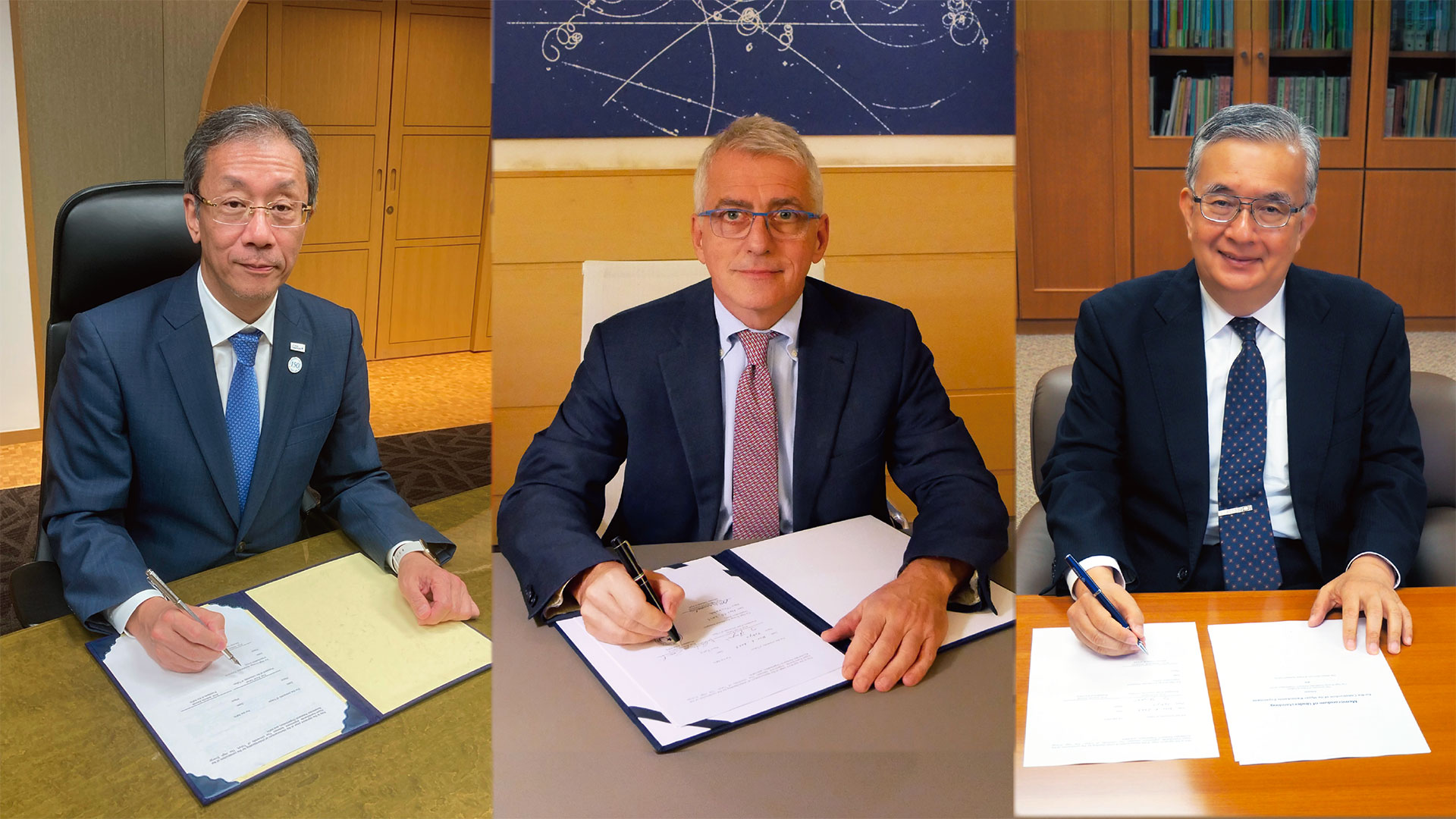 The Italian National Institute for Nuclear Physics (INFN), the Japanese High Energy Accelerator Research Organization (KEK) and the University of Tokyo (UTokyo) signed a memorandum of understanding (MoU), which aimed to promote the Hyper-Kamiokande international scientific research project, a large experiment dedicated to neutrino physics, whose main detector has been under construction with plans to start operation in 2027 in Kamioka, in Japan. Twenty-two countries showed their interest in participating in this project, led by Japanese researchers, and Italy is the third nation to sign MoU following Poland and Spain in 2022. The Memorandum was signed by UTokyo President Teruo Fujii, KEK Director General Masanori Yamauchi and INFN President Antonio Zoccoli, in November 2023.
The Italian National Institute for Nuclear Physics (INFN), the Japanese High Energy Accelerator Research Organization (KEK) and the University of Tokyo (UTokyo) signed a memorandum of understanding (MoU), which aimed to promote the Hyper-Kamiokande international scientific research project, a large experiment dedicated to neutrino physics, whose main detector has been under construction with plans to start operation in 2027 in Kamioka, in Japan. Twenty-two countries showed their interest in participating in this project, led by Japanese researchers, and Italy is the third nation to sign MoU following Poland and Spain in 2022. The Memorandum was signed by UTokyo President Teruo Fujii, KEK Director General Masanori Yamauchi and INFN President Antonio Zoccoli, in November 2023.
According to the MoU, the Italian participation in Hyper-Kamiokande has been organized by several groups: the INFN divisions of Bari, Naples, Padua, Pisa and Roma, the INFN Legnaro National Laboratories, the Polytechnic University of Bari, the University of Naples Federico II, the University of Campania “Luigi Vanvitelli”, the University of Salerno, the University of Padua, the University of Pisa and the University of Rome Sapienza. The Italian major expected contributions are the development, production and installation of new photosensor modules (multi-PMT), developed by INFN in the context of the KM3Net neutrino telescope project, and of the front-end digitizer boards for the 20-inch photomultipliers.
The Hyper-Kamiokande detector is planned to have a mass eight times larger than its predecessor detector, Super-Kamiokande, it will host 258 thousand tons of ultrapure water and it is equipped with newly developed high sensitivity photosensors. The aim of the project is to test the Grand Unified Theory and the history of the evolution of the universe through the study of proton decays and CP violation (the asymmetry between neutrinos and antineutrinos), together with the observation of neutrinos from supernova explosions. The budget of the construction was approved by the Japanese government in February 2020: this date marked the official start of the project. The construction went into full swing with the main cavern excavation, started in November 2022, and with the successful completion of the main dome of the experimental site in October 2023.






